Wood turning is an interesting and artistic way of shaping raw wood into beautiful objects. No matter the level of expertise, knowledge of basic tools that are essential for successful woodturning is necessary whether one is a beginner or a professional who has been working with wood for years. The blog post offers detailed explanations on different lathe tools that you can get started with to explore more and master in the art of woodturning. These instruments include: chisels, gouges, calipers, parting tools among others which have their own specific functions when it comes to sculpture and final touch up touches on your wooden artifacts. We will take you through the must-have tools, their purposes as well as how they contribute to the interplay between lathe and wood.
Choosing the Right Wood Turning Tools for Beginners
Understanding the basics of wood turning tools
At the beginning of one’s wood turning adventure, it is important to know the basic tools as well as their functions. They include: roughing gouge, which is a spindle and mostly used for transforming a square shape into round; skew chisel, which results in smooth surfaces and finer details; bowl gouge that is employed in hollowing bowls and other shapes with curves. Also there are parting tools to size and make grooves while you can use calipers to measure thickness and diameter of your workpiece accurately. Each tool has its specific purpose and when correctly used, it greatly improves accuracy as well as quality of your woodturning projects.
Lathe tool essentials: from gouge to scraper
To become an expert in wood turning, you must first understand the variety of lathe tools available along with their specific purposes. These essential tools include versatile spindle gouges which are perfect for making coves, beads or shaping spindles in detail. On the other hand, bowl gouges have deeper flutes allowing them to effectively remove waste material while shaping bowls and vessels at the same time. In contrast to where gouges are less effective scrapers which are flat-bladed tools help refine curves or smooth out surfaces. Lastly parting tools cut tenons grooves and separate finished pieces from stock. Picking these tools appropriately will bring precision and finesse in your woodturning projects.
The importance of tool handle ergonomics in wood turning
Woodturners consider proper ergonomics of handles when they design them because it will significantly influence the safety as well as comfort experienced by any turner during his work. By reducing strain on hands wrists and arms ergonomic handles contribute toward preventing repetitive stress injuries like carpal tunnel syndrome.Handles should be chosen based on factors such as length diameter ,and material
Typically handles range between10-20 inches long enabling manipulators to get maximum control over the process and leverage for better turning. Usually, handles with a diameter of 1-2 inches are best since they offer a strong and firm grip thereby minimizing fatigue during long working hours. Moreover, handle material also plays a key role; hickory or ash wood is used to make handles which are shock absorbent as well as long-lasting whereas rubber or foam grips provide additional comfort and reduce vibrations. When in line with these ergonomic principles, choosing such handles helps the woodturner improve his technique while ensuring more accuracy and fun during turning.
Lathe Tool Types: An In-depth Look at Carbide vs. HSS
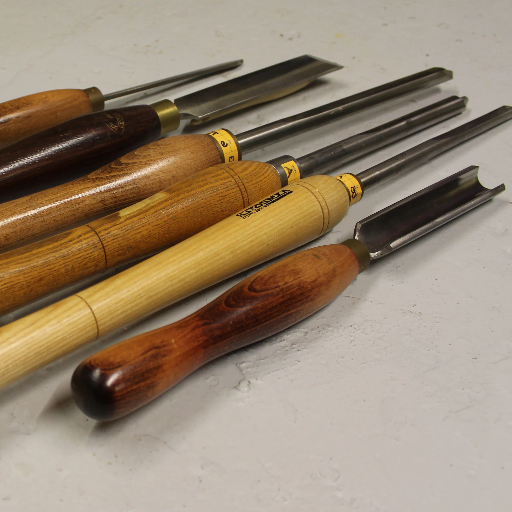
Comparing carbide and high-speed steel (HSS) lathe tools
In comparing carbide and high speed steel (HSS) lathe tools, there are a number of factors to be considered in terms of durability, cost and performance.
Durability:
- Carbide Tools: Known for their extreme hardness, carbide tools maintain sharp edges compared to HSS. They work well at high speeds and are specifically designed for cutting hard materials. However, they are fragile or brittle and can crack easily when mishandled.
- HSS Tools: Although not as rigid as carbide, HSS is more flexible hence less prone to breaking. They can be easily sharpened thereby enabling repeated use making them ideal for many general purposes in woodturning.
Cost:
- Carbide Tools: Generally more expensive due to the cost of materials and manufacturing processes involved. Nevertheless, their longer edge retention makes these first few buyings worthwhile especially if use is frequent or intensive
- HSS Tools: Usually cheap initially but frequently need resharpening that eventually increases long term costs through the time spent sharpening frequently in addition to equipment required for maintenance.
Performance:
- Carbide Tools: Deliver great results at higher speeds and maintains a sharp cutting edge leading to smoother cuts with finer finishes. They can machine tougher materials better but do not tolerate impacts or rough handling very well
- HSS Tools: Have good versatility because they can be resharpened which makes them suitable for various types of woodturning jobs. They cut better at lower speeds making it possible to reshape them as appropriate for different cuts.
Technical Parameters for Comparison:
Hardness:
- Carbide: 1600-2000 Vickers
- HSS: 600-900 Vickers
Tensile Strength:
- Carbide: ~1,000 MPa
- HSS: ~1,200 MPa
Tolerance to Heat:
- Carbide: Can bear up temperatures up to 1,000°C
- Hss :Effective up to 600°C
Woodturners should consider these factors and criteria so that they can choose the right tool type according to project requirements, budget and preferred working conditions.
Significance of using carbide in detail work
From my experience, carbide turning tools have wide-ranging benefits when it comes to detail work. The first advantage is that they maintain their sharp edge for longer periods of time meaning that I spend less time sharpening and can devote myself more to the finer aspects of what I am working on. This is very important because maintaining a sharp edge ensures that I make cleaner and accurate cuts which are vital when doing detailed work. Moreover, as these tools are able to perform well at high speeds, I can do quality work in a shorter period of time. Lastly, these tools are good for dealing with tough materials hence increasing the variety of job types that could be done without worrying much about wear or damage on the tool.
Some reasons why some turners prefer HSS for finishing and roughing
In conclusion, many turners use High Speed Steel (HSS) tools for finishing and roughing due to their versatility and ease of sharpening. HSS tools can be shaped into specific profiles which is especially helpful when getting the required finish over different wood species. Additionally, HSS is more effective at lower speeds so there will be less chance of overheating caused by the tool; this results in a better surface finish. Not only do they cost less than carbide but also provide practical choices for both novices as well as experienced woodturners. Most importantly during roughing out, HSS allows more precise removal of material leading to better surface quality upon completion.
Sharpening Your Woodturning Tools: A Step-by-Step Guide
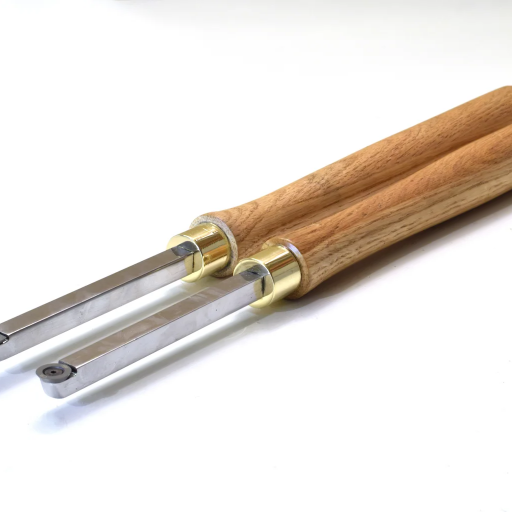
Essentials of sharpening carbide and HSS tools
Sharpening Carbide Tools
The fact that they last really long and are tough makes carbide tools easy to sharpen. The best method that can be used is with the use of a diamond sharpening card or honing wheel because it is hard for conventional sharpening stones to work on carbide. Below are the steps for sharpening carbide tools:
- Choose a Diamond Stone: Opt for a fine-grit diamond stone which usually measures around 600-1200 grit for regular sharpening.
- Position the Tool: Have the carbide tool held at the right bevel angle which is typically about 45 degrees when it comes to most turning tools.
- Sharpening Movement: Move the tool across the diamond stone or wheel back and forth while keeping an even angle consistently.
- Check the Edge: Inspect sharpness by looking at edge after several passes; you may need magnifying glass if there are any remaining dull spots
- Hone (Optional): Use finer diamond stone in honing process so that you get additional sharp finish.
Making HSS (High-Speed Steel) Instruments Sharp
Regarding this, HSS instruments have many ways of being sharpened hence often necessitates the use of a bench grinder or dedicated sharpening system. The ensuing are some steps that can prove helpful when sharpening HSS tools:
- Bench Grinder Usage: In most cases, it is good to have a 6 or 8-inch bench grinder equipped with a coarse grinding wheel (36-80 grit) for rough shaping.
- Setting the Tool Rest: Typically, you will need to adjust your tool rest so that its bevel angle matches that of your tool, usually around 25-45 degrees depending on what kind of an instrument it is.
- Grinding the Edge: What you should do here is gently pressing down against your grindstone while moving back and forth across its face in order not overheat anything up.
- Cooling Off Your Tools: This step involves frequently dipping them into water which helps cool them down thus preventing their metal from losing temper.
- Finishing by Honing: Finally use higher grit wheel or sharpen stones until desired level sharpness has been achieved; then stop!
Technical Parameters for Sharpening Tools:
- Angle of Bevel:
- Carbide: ~45 degrees
- HSS: 25-45 degrees depending on the tool
- Grit Size for Sharpening:
- Carbide: 600-1200 grit (diamond stone)
- HSS: 36-80 grit (grinding wheel), finer grit for honing
- Sharpening Tool:
- Carbide: Diamond sharpening card or honing wheel
- HSS: Bench grinder, sharpening stone, or specialized sharpening system
- Cooling Method:
- Carbide: Typically not required, as carbide resists heat well.
- HSS: Frequent cooling in water to prevent overheating.
By adhering to these guidelines, woodturners can maintain the sharpness and efficiency of their carbide and HSS tools, ensuring higher quality in their work.
How to set up a station for sharpening lathe tools
In setting up a station for sharpening lathe tools, I found that being organized, safe and efficient was essential. One thing I did was make sure I had a strong workbench in place where my sharpening tools would be held firmly. In addition, I installed a bench grinder specifically for this purpose with both course and fine grinding wheels to accommodate different grits. Nearby, I kept a container of water or coolant to quickly quench the hot metal of my turning tools as it can get very hot when used intensely over short periods of time. My sharpening stones, honing guides and accessories were also well arranged so that they were within easy reach to me. The other key factor is ensuring good lighting as it enables one see the edges well while working on them. Lastly, I put in place dust extraction or collection systems thereby keeping the area clean and minimizing inhaling of metal particles and debris produced during grinding processes. This has helped me perform task much faster by reducing the duration needed to sharpen my tools thus increasing their sharpness.
Tips on how to keep bowl gouges and scrapers sharp
Accordingly, there are some tips that experts have been giving which help me maintain the edge on my bowl gouges and scrapers most of which came from expert sources. Basically what I do is hone these edges regularly with diamond sharpening cards so they stay usable between more intensive grinding sessions. Then there is using slow speed grinders with fine grit wheels in order not to heat the shanks which leads to more breakages: (Barnes 2005). Also checking bevel angle frequently such as with sharpening jigs if required helps maintaining consistency among them all at same angle in case adjustments are needed. Because of this reason, having clean cutter ends will allow you achieve this particular goal since any kind of dirt will lead ruin your blades sharpness within no time. Finally and most importantly, I always ensure my sharpened tools are stored in a safe place so that they do not get damaged or knocked around. These practices have resulted into improved performance and lifespan of my scraper and bowl gouges.
Advanced Turning Techniques: Beyond the Basics with Specialty Tools
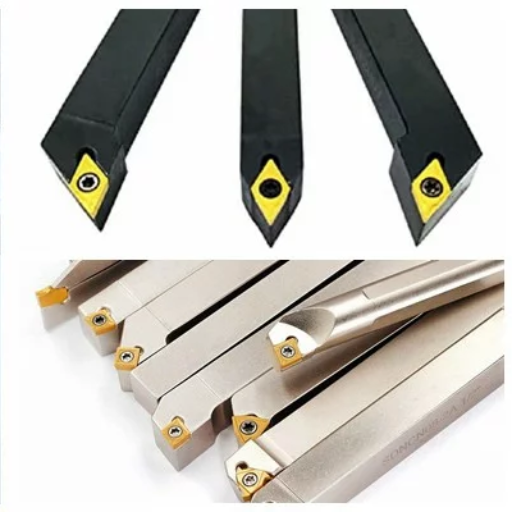
Examining uses of the skew, parting tool and hollowing tools
Each of the above tools has a specific range of applications that augment the quality of my carved projects. The skew chisel is an all-rounder for spindle work as it imparts silky smooth finishes to the wood making it extremely useful in turning beads and coves. In contrast, parting tool is excellent in making deep grooves and, separating done areas from workpiece precisely controlling tenon’s diameter as well as other joinery. Bowl gouges are indispensable when removing stock inside hollow forms such as bowls and vases while maintaining control over wall thicknesses. However, using them involves mastering their cutting dynamics through practice; nevertheless this has opened up fresh creative vistas into my turning ventures.
Including a modest finisher IV for distinctive effects
By incorporating a simple finisher into your design you can give your turnings an entirely new look of refinement. Using it adds an exceptional level of smoothness and detail to your project according to insights from several leading woodturning websites I visited recently. To make sure I achieve smooth surfaces with no torn areas by having my scraper blade at correct bevel angle and running so slightly down into the grain on the spinning wood surface. As a result this has become one tool in my studio that cannot miss in the toolbox given its impact on finishing my pieces perfectly even after taking so much time to do so since I knew exactly what I wanted to achieve before starting any action with these products which makes all difference possible during its preparation
Accessorizing Your Lathe for Optimal Turning
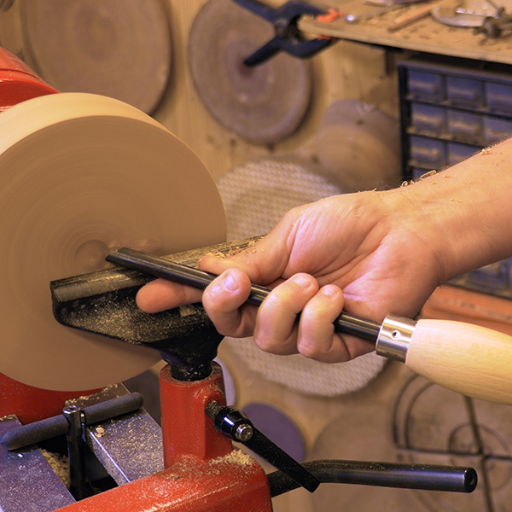
Choosing the right chuck, tool rest, and lathe accessories
A few key considerations can make a significant difference when choosing the right chuck, tool rest and lathe accessories. First, I will have to select a chuck which means that I must understand the kind of work I am usually carrying out. A four-jaw self-centering chuck is versatile and reliable for general turning. On the other hand, if it happens that I’m doing more specialized projects such as bowls or hollow forms’ turning then chucks specifically designed for those works may be used so that irregular work pieces are held strongly.
The tool rest is another vital component. The proper manipulation of the turning tools may be comfortably done using a smooth adjustable and properly sized tool rest. To ensure smooth movements and better control over cuts, my favorite tool rest has flat surfaces with curves on them.
Lathe accessories like high-quality live centers, drive centers and faceplates help improve accuracy and ease while working. My machine will also need steady rests as well as extension bed kits in order to undertake more complex projects including larger ones too. Thereby every accessory helps me shape my turning process making it safer and even more efficient for woodwork.
Why a solid brass handle might be the best choice for your bowl gouge
When it comes to your bowl gouge, a solid brass handle might be the best option due to its exceptional durability together with balance. Solid brass handles are known to be very durable besides being balanced perfectly hence ideal for a bowl gouge too since they do not wear out easily unlike wooden ones which rot fast when exposed to water or moisture of any other nature because their natural oils have sipped inside them through capillarity thus making them damp leading to rotting away within no time at all bet they could last longer than most metals unlike aluminum which corrodes very easily moreover aluminum would break easily when subjected to some forceful hammering though its lightweightness is an added advantage since it reduces the weight of the tool making it easy to handle.
Exploring the benefits of unhandled turning tools
There are several reasons why woodturning enthusiasts should consider using unhandled turning tools. Firstly, they offer a chance of choosing any handle that suits you best in terms of size, grip and weight distribution to enable you enjoy more comfort and control while using them. Without handles, there is no need for having several different tool shafts or shapes as with just one handle it can be used interchangeably between different ones with diverse heads thereby reducing clutter and ensuing cost savings. For instance, instead of investing in integrated handles, manufacturers can concentrate on high-quality tool steel which improves their cutting performance. Therefore, this approach enhances personalized and adaptable woodturning experience in general.
Building Your Ideal Woodturning Tool Set: What to Include
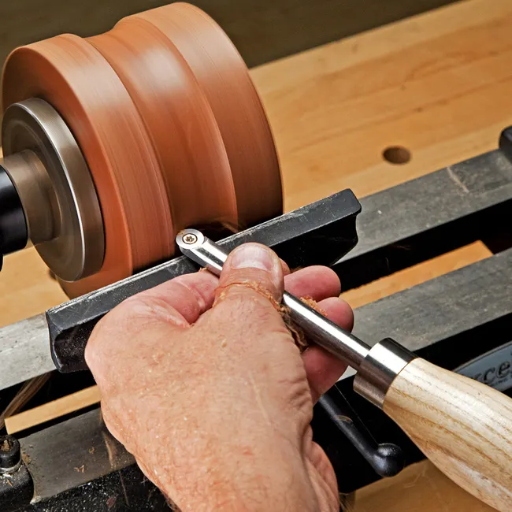
Image Source:rockler.com
The Must-Have Tools for Every Wood Turner’s Collection
When building my must-have tools, there are several woodturning tools that I consider to be must-haves. The first and most important one is the bowl gouge which is very necessary for shaping and hollowing bowls. Also another essential tool is the spindle gouge which is perfect for intricate designs and detailed spindle work. A parting tool aids in cutting off or separating pieces while a skew chisel provides smooth finishes for precise cuts. Furthermore, I add a roughing gouge that can be used to shape roughly and remove material in large quantities quickly. Lastly, a scraper refines shapes and achieves fine surface finishings. These tools together with my handle selection make up an efficient and versatile wood turning kit.
Considering an 8 Piece Turning Tool Set vs Individual Selections
When choosing between an 8 piece set of turning tools or simply selecting individual tools, several considerations come into play. For instance buying an eight-piece set would give me better value and provide me with all ranges of tools required when handling diverse projects. In particular this may prove to be helpful for novices who have not yet figured out which equipment they will use often. Nevertheless by picking individual ones it allows me to customize my own collection as well as purchasing higher quality specialized brands that may suit my style of operating on wood more than others do; hence depends largely whether I prefer convenience/ economy or personalisation/quality.
Reference sources
1. Wood Magazine: Essential Woodturning Tools
Type: Online Article
Summary: This article from Wood Magazine provides a comprehensive guide to essential woodturning tools needed for successful wood turning. It covers a wide range of tools, from basic chisels and gouges to specialized accessories like calipers and hollowing tools. The article includes detailed descriptions, usage tips, and recommendations for both beginners and advanced woodturners. This source is valuable for readers seeking expert advice on assembling a complete set of tools for their woodturning projects.
2. American Woodturner Journal: Tool Selection for Beginner Woodturners
Type: Academic Journal Article
Summary: Published in the American Woodturner Journal, this article focuses on tool selection for beginner woodturners. It discusses the various types of lathe tools, their specific applications, and how to choose the right tools based on skill level and project requirements. The article also emphasizes safety considerations and proper tool maintenance. As a peer-reviewed journal article, this source provides accurate and credible information, making it particularly useful for new woodturners looking for trustworthy guidance.
3. Rockler Woodworking and Hardware: Essential Lathe Tools for Woodturning
Type: Manufacturer Website
Summary: Rockler Woodworking and Hardware’s website features a dedicated section on essential lathe tools for woodturning. This page offers detailed information on various tools, including their specifications, uses, and benefits. It also includes customer reviews and ratings, helping potential buyers make informed decisions. As a reputable retailer specializing in woodworking supplies, Rockler provides accurate and practical insights into the essential tools needed for successful woodturning projects.
Frequently Asked Questions (FAQs)
Q: What features should I consider when selecting Sorby lathe tools?
A: Key features to consider when choosing Sorby lathe tools are such as the use of high quality materials like M2 high speed steel for long lasting, ergonomically designed handles and a range of cutting profiles, which include spindle gouge, beading and parting tool, and roughing gouge. Other elements encompass how easily the tool can be sharpened and its adaptability for different woodturning projects.
Q: How often do I change the carbide cutter on my lathe tools?
A: The frequency at which you replace a carbide cutter will depend on usage and type of material being turned. Nevertheless, carbide cutters last way longer compared to high speed steel blades. Look out for any signs of wear or difficulties in making clean cuts. Many woodturners watch out for dull edges and replace the cutter whenever needed so that it could work best; this could take several months up to one year or more under normal circumstances.
Q: Why use heavy-duty lathe tools for turning bowls and boxes?
A: Turning bowls and boxes using heavy-duty lathes has several advantages one of them being stable control arising from their sturdy built. They are more suited to handle heavier cuts that are required when shaping walls of bowls to form bottomless or flat-bottomed bowls plus boxes. Furthermore, they are generally made from durable materials such as carbide that possess staying power besides keeping an edge longer.
Q: Can I get away with using easy wood tools instead of specific pen turning tools?
A: Easy Wood Tools is known for producing versatile woodturning tools suitable for various projects including pen turning but specific pen turning tools have been created with the intricacies involved in pen making in mind. These devices have smaller tips as well as profiles appropriate for delicate work done while pen turning. However, if one is new into it or prefers an all-in-one tool, the full-size and mid-size models of Easy Wood Tools may still give splendid results on pens.
Q: Do lathe tools exist that are specifically intended for making fine beads and partings?
A: Indeed, a beading and parting tool is designed particularly for producing fine beads and parting cuts. Those tools have a slim sharp cross section allowing exact cutting and detailing. Quality examples of these made by firms such as Sorby entail use of alloyed steel with a very thin grain which keeps an edge in place to make sure that the cut will be clean without any raggedness when engaging in some woodworking projects.
Q: What makes the spindle gouge different from other turning tools?
A: The spindle gouge is characterized by its deep U shape flute, which allows it to give detailed shaping and smooth curves to spindle work. It’s ideal for creating coves, beads, and other decorative elements on pieces mounted between the headstock and bottom. The unique flute design of a spindle gouge enables precise control over it while also giving it maneuverability; something that every person who does spindle turning should know.
Q: How do box scrapers or new scraper designs improve the bottom finishes of bowls?
A: Box scrapers along with new scraper designs are exclusively made so as to help create flat-bottomed bowls/boxes that are smooth. These tools have squared-off ends that allow them to scrape across the bottom surface efficiently ensuring both a flat and smooth finish. This implies they still remain useful during final shaping and smoothing stages since these enable users achieve accurate bottom finishes in both bowls and boxes.
Q: What role does my carbide wood turning chisel set play in my woodturning projects?
A: A carbide wood turning chisel set is vital for versatility as well as efficiency in woodturning projects. For roughing out, detailing, finishing work, several kinds of these sets would normally come with different tools for such tasks. Carbide tipped cutters last longer than standard H.S.S., therefore they are the best for turning and no sharpening while in the middle of a project. This would enable them have consistent performance as well as reduce time spent on maintaining tools.









